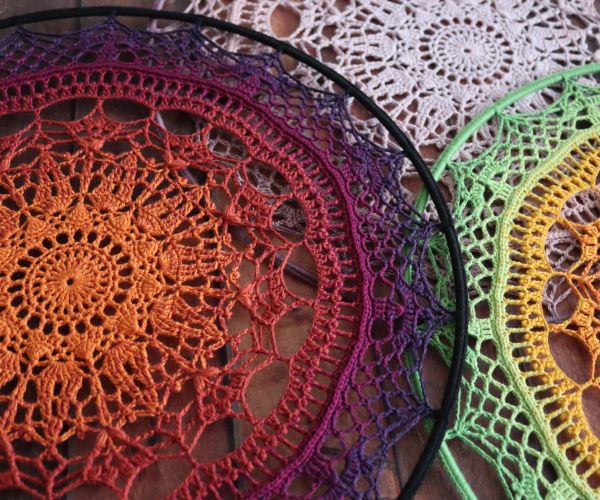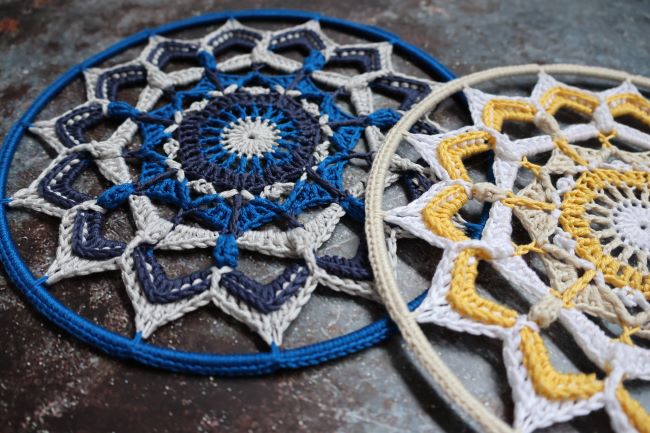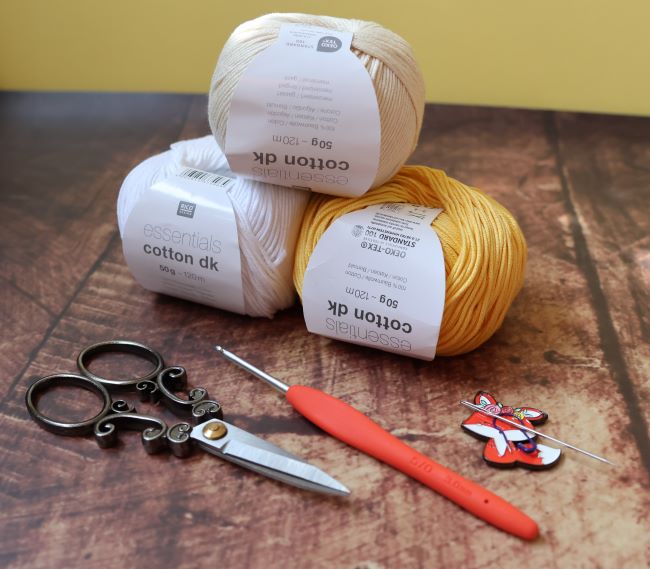Introduction

Crocheting is a creative outlet enjoyed by millions around the world—but if you’re left-handed crocheter, getting started can come with a few extra hurdles.
Most patterns, tutorials, and tools are designed with right-handed crocheter’s in mind, which can make things feel confusing. But don’t worry—being a left-handed crocheter isn’t a limitation, it’s just a different approach. With the right strategies and a bit of guidance, lefties can crochet just as beautifully and confidently as anyone else.
Whether you’re just picking up your first hook or you’ve been stitching for years and want to improve your technique. Tips are here to help you navigate the world of crochet from a left-handed perspective.
1. Seek Out Left-Handed Resources
Getting started with crochet as a left-handed crocheter beginner can feel a little overwhelming at first. That is especially true when so many tutorials and books are geared toward right-handed stitchers. But the good news is that more and more content creators and designers are recognizing the needs of left-handed crocheters and are creating resources just for you.
When browsing platforms like YouTube, Pinterest, or Instagram, try adding keywords like “left-handed crochet,” “lefty tutorial,” or “mirror image crochet” to your searches. This can help filter out videos that are specifically recorded with left-handed techniques in mind. Many generous creators now offer mirrored versions of their tutorials. They either film with their left hand or flip the footage horizontally, so you can follow along without mentally reversing every step. Watching someone crochet in the same direction you naturally do can make a huge difference in your learning curve.
Pinterest is another excellent resource for finding left-handed diagrams, photo tutorials, and printable guides. You’ll find everything from basic stitches to advanced patterns broken down visually for left-handed learners. If you prefer to learn from books, keep an eye out for titles that mention left-handed support in their descriptions. Some modern crochet books now include mirror-image charts or left-handed stitch instructions alongside the right-handed versions—a big win for inclusivity in the crafting world.
Don’t be afraid to ask questions in online forums, comment sections, or social media groups, either. The crochet community is full of supportive makers, and many left-handed crocheters are happy to share the resources that helped them the most. Whether it’s a favorite YouTube channel, a lefty-friendly pattern designer, or a technique tip that made something “click”.
2. Learn to Read Your Work
One of the most empowering skills you can develop as a left-handed crocheter is learning to read your stitches. This means recognizing each type of stitch (single crochet, double crochet, etc.) and understanding how rows and rounds build on one another. Once you’re comfortable reading your crochet, you’ll be less reliant on mirrored instructions and more confident tackling any pattern—right-handed or not.

3. Practice with Symmetrical Projects First
To ease the learning curve, start with projects that look the same no matter which direction you work in. Scarves, dishcloths, or simple blankets are perfect beginner projects. These allow you to focus on building your technique and comfort with the hook and yarn without worrying about how the pattern will turn out if it’s mirrored.
4. Be Proud of Your Perspective
Left-handed crocheters often develop unique techniques and problem-solving strategies. That perspective can actually be an advantage, especially when it comes to teaching others or adapting patterns creatively. Don’t be afraid to share your process—you never know who else you might inspire!
5. Finding the Right Tools for left-handed crocheter
When you’re left-handed, one of the first hurdles you might encounter in crochet is realizing that not all tools are truly designed with you in mind. While most crochet hooks are technically ambidextrous in shape, many ergonomic or comfort-grip hooks are actually molded to fit the natural curve of a right-handed grip. These subtle differences might not be obvious at first, but over time, they can lead to discomfort, strain, or frustration during longer crochet sessions.
For this reason, it’s worth investing in tools that feel good in your hand. Look for crochet hooks with symmetrical handles or those specifically labeled as left-handed or ambidextrous. Some brands even offer customizable grips or interchangeable handles that let you adjust the fit to your preference. It may take a little trial and error to find your perfect hook style. Finding one that complements your natural movement can make a world of difference in both speed and enjoyment.
Beyond hooks, it’s also helpful to consider how your accessories align with your workflow. Stitch markers that dangle in the way of your hook, row counters that are hard to click with your dominant hand, or even yarn bowls that pull the yarn in the wrong direction can all subtly interrupt your rhythm. Choose tools and accessories that support your left-handed motion. Center-pull yarn skeins, repositionable counters, or yarn bowls that feed from the left – anything that keeps your projects flowing smoothly.
Ultimately, your crochet experience should feel comfortable, intuitive, and fun. The right tools are a big part of that. As a left-handed crocheter, giving yourself permission to be picky about your gear isn’t just reasonable—it’s smart. A few thoughtful adjustments can turn a frustrating setup into a cozy, creative space where your left-handed style can truly shine.
6. Crocheting in the Round as a Lefty
Crocheting in the round opens up a whole world of creative possibilities—from cozy beanies and seamless sweaters to intricate doilies and adorable amigurumi. But for left-handed crocheters, working in the round introduces a unique twist—literally. Because you’re stitching in the opposite direction of right-handed crocheters (counter-clockwise instead of clockwise), your finished pieces will naturally spiral or build in the opposite direction.

Most of the time, this doesn’t cause major issues. The overall shape and structure of the piece will still turn out just fine. However, this reversed direction can affect patterns that involve colorwork, shaping, or directional textures like post stitches or cables. E.g, if a pattern is designed to have a visual spiral that winds a certain way your left-handed stitches may produce the mirror image. This isn’t necessarily a bad thing, but it can create a different look than intended.
To stay on track, it’s a good idea to mark the beginning of each round with a stitch marker and double-check your placement often. That is especially important when working on complex or detailed patterns. Visual cues like stitch markers or row counters can help you stay aligned with the pattern, even if your rounds are spiraling in the opposite direction. If the pattern involves joining rounds with a slip stitch, be mindful of how your joins might appear. Their orientation may slightly differ from the original photos or diagrams.
With practice, you’ll start to recognize how left-handed construction subtly shifts the look of your work and how to adapt to it confidently. Whether you embrace the mirrored effect as part of your unique style or tweak certain techniques to match the original pattern more closely, crocheting in the round as a lefty becomes second nature with time and attention to detail.
7. Converting Written Patterns or Charts for left-handed crocheter
As you dive into more complex crochet projects, understanding how to adapt right-handed patterns for left-handed use becomes a valuable skill. Most crochet instructions are written with right-handed construction in mind. That means stitch placement, direction of rows, and even shaping can look and behave differently when worked left-handed. For instance, a typical instruction like “ch 10, dc in 4th ch from hook” seems straightforward, but as a left-handed crocheter, your stitches will naturally move in the opposite direction, placing that double crochet on the other end of the foundation chain. This may not matter for basic projects, but in garments, motifs, or textured patterns, even small changes in direction can affect the outcome.
Many left-handed crocheters choose to rewrite parts of a pattern to mirror the stitch placement or direction. This might mean reordering stitch instructions in rows, reversing increases and decreases, or flipping shaping instructions from left to right. For visual learners, stitch diagrams can be even trickier—symbols and directional arrows follow a right-handed logic. In these cases, using stitch chart software, photo editing tools, or even just printing out the chart and flipping it horizontally can help recreate a version that’s easier to follow.
With practice, you’ll start to recognize when a pattern needs to be flipped and when it doesn’t, especially once you get comfortable “reading” your crochet work as it develops. Over time, you may even find yourself able to mentally convert instructions on the fly. But in the beginning, don’t hesitate to take notes, rewrite sections. You can also create visual aids to help you stay on track. Taking a little extra time up front can prevent a lot of confusion and save you from having to frog rows down the road.
Conclusion

Being a left-handed crocheter may come with a few extra steps in the beginning. However, it also opens up a world of creativity and personal expression. With patience, practice, and a growing library of left-handed-friendly resources, you can master the craft just like anyone else. Remember, your stitches are just as beautiful—no matter which hand holds the hook. So keep going, stay inspired, and let your left-handed style shine through every piece you create. Happy Crocheting !